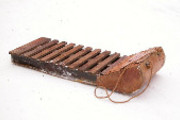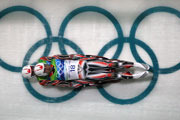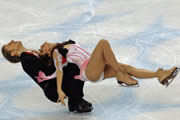At the 2010 Winter Olympics on Whistler Mountain, there was a dangerous steep track made out of concrete and a thin layer of ice where the Bobsled, Skeleton and Luge travel at speeds of up to 90 MPH. Courageous Olympic athletes risk their lives sledding along this dangerous track, and the Bobsled, Skeleton and Luge are known as the most dangerous sports at the Olympics.
The Bobsled (Bobsleigh)
The Bobsled is build like a giant bullet on skates. Either 2 or 4 racers start running along the ice track pushing the sled for 50 meters before they jump in and head down the track. The front racer controls the sled with a rope system that steers and helps the sled turn. The racer(s) in the back control the brakes.
The Skeleton
The Skeleton was just recently put back into the Olympics after 50 years at the 2002 Olympics in Salt Lake City. It was an event criticized for lack of grace and skill. The Skeleton is performed with a small rectangular sled that the racer runs and jumps onto to slide face-first along the track. The Skeleton has no brakes and is usually started lower down the mountain because it is much more dangerous than the Bobsled.
The Luge
The Luge is a french word for sled. The Luge is a very narrow sled that can travel at faster speeds than the Bobsled and Skeleton, so it's a lot more dangerous. Either 1 or 2 racers use their hands to get going while sitting on the sled and then lie on their backs all the way down the track. The Luge is known for being more dangerous than the Skeleton and Bobsled because it is the fastest sled and the G-Force prevents the racers from being able to lift their heads to see where they are going. SCARY!
From Danger To Death
At the 2010 Olympics in Vancouver, Georgian Luger Nodar Kumaritashvili took the last turn on the track too sharp and bounced right into a steel pillar traveling at full speed. He became the 2nd Luger ever to die at the Olympic Games.
Related Stories:

































